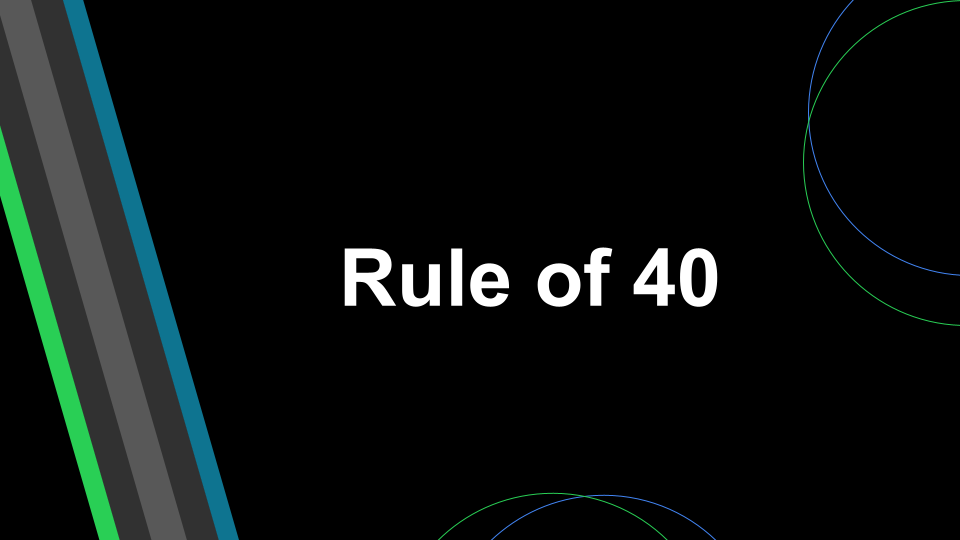Why You? Why Now? How Founders Earn the Right to Solve Big Problems

Ever pitch your startup and feel that silent question hanging in the air?
“Why you?”
Not “Why this product?” Not “Why this market?” But you. Why should you be the one to solve this problem?
Ouch.
It’s a gut-check. One that cuts deeper than traction, TAM, or tech stack. Because it’s not about the business. It’s about you as the builder.
And here’s the uncomfortable truth: If you don’t have a damn good answer, investors won’t either. And worse, you won’t believe it yourself.
Let’s fix that.
Step 1: Start With the Pain You’ve Earned
Real founders bleed for their problem.
That doesn’t mean you need a tragic backstory. It means you’ve lived the pain deeply enough to recognize the blind spots others miss.
Maybe you were a head of ops drowning in spreadsheets. Maybe you were an Amazon seller manually updating inventory across three channels every Sunday night. Maybe you missed payroll because you didn’t understand your cash burn.
Good problems are felt problems.
If the problem lives on a spreadsheet, anyone can try to solve it. If it lives in your gut, that’s your edge.
Action Step:
Write down the last moment this problem made you angry, embarrassed, or exhausted. That’s the emotional proof you’re solving it for the right reasons.
Step 2: Connect the Dots in Your Story
Your resume isn’t your founder's origin story. Your lived experience is.
Ask yourself: What parts of my life, career, or obsession gave me unfair insight?
Did you try to solve this problem at your last job and hit a wall? Did you notice an inefficiency nobody else saw because you were the one stuck doing it? Did you work on something similar and realize where the current solutions break?
Your investor doesn’t need a perfect background. They need a believable one. One where your past naturally leads to this moment.
Coaching Insight:
You’re not just building a company. You’re writing a character arc. If you were the protagonist in a movie, would the audience root for you to be the one who cracks the code?
Step 3: Define Your Obsession
Great founders are obsessed. Not casually interested. Not opportunistic. Obsessed.
This is where most fall short. They pick a problem because it’s trending, not because it haunts them.
The truth is: obsession fuels resilience. When the money’s tight, the launch fails, or the press ignores you, only obsession will keep you going.
If you’re not obsessed, investors won’t say it out loud but they’ll walk away.
Action Step:
Finish this sentence: “Even if this startup failed, I’d still spend the next 5 years solving this problem because…”
If you can’t finish that sentence, dig deeper. Or pick a different problem.
Step 4: Identify the ‘Why Now’
Every great startup rides a wave. Technology shifts. Regulation changes. Cultural behavior evolves.
Investors want to know: Why is now the moment your solution finally works?
But let’s go deeper.Why is this the moment for you personally?
Did you finally quit your job? Did the tech catch up to your vision? Did the market mature enough that your angle finally makes sense?
That answer makes your narrative inevitable, not optional.
Analogy:
Think of your startup like a surfer. The wave is the market shift. The board is your product. But the surfer that’s you. If you’re out of position, you miss the wave. If you’re too early, you get crushed. The magic is when all three align.
Step 5: Articulate Your Personal Moat
Here’s the closer: What can you uniquely build, see, or execute that others can’t?
This is your founder-market fit. Your unfair advantage. Your moat.
Sometimes it’s your background. Sometimes it’s your network. Sometimes it’s how you think.
But there has to be something that makes you the exception, not just another entry in a pitch competition.
Coaching Insight:
A personal moat isn’t about ego. It’s about clarity. If you can name it, you can protect it. If you can protect it, you can win.
Action Step:
List 3 reasons why someone else would struggle to solve this problem the way you can. Be bold.
Final Reflection: Convince Yourself First
The question “Why you?” isn’t just for the pitch. It’s the foundation for your stamina, your leadership, and your belief.
Startups don’t die when the market shifts. They die when the founder’s conviction gets shaky.
So do the hard work. Dig up the real reason you’re building this. Sharpen it like a blade. When it cuts through doubt, it becomes your edge.
Because when you believe you’re meant to solve this problem others will too.
If you’re clear on why you are the one to solve this problem, make sure your financials back that conviction with clarity and confidence. Futureproof gives you the tools to model your story, track the right metrics, and show investors you’re not just guessing, you’re ready. Start your free trial today and build with conviction.
Get complete financial clarity in under 10 minutes. No more broken spreadsheets, no more QuickBooks chaos—just the insights you need to scale with confidence.
.svg)





